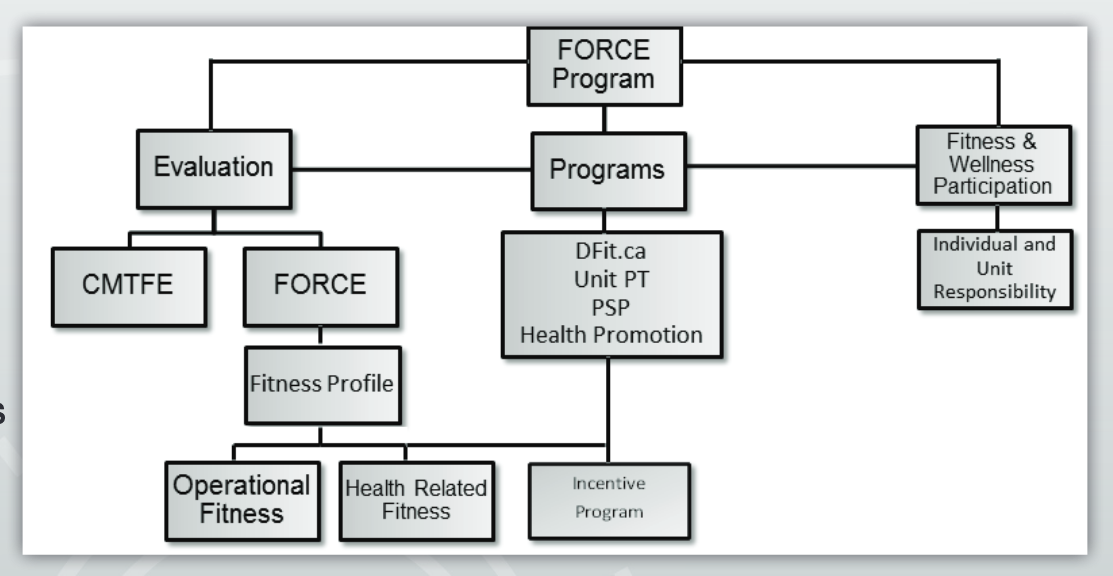Learning Objectives
- Coach movement quality analysis
- Practice scoring the FMS screen
- Experience a full FMS screen
What is functional movement?
Whole body, multi-joint movements that mimic both the way we were made to move and the way we presently need to move in order to operate at a high functioning level (and with a high quality of life) in our daily lives.
- For some that involves getting in and out of a chair
- For others that involves performing their sport at the highest level
What are a few reasons to train using functional movement?
- Improved performance: Functional movement patterns make up the backbone of most sport or performance activities. If there is a restriction in free movement and/or a lack in practice or skill development an athlete will not be able to either perform or enhance their performance through sport or other conditioning techniques. This would be true for both cardiorespiratory (e.g. running free of restriction improves mechanical efficiency) and strength/power (e.g. proper hip and shoulder mobility and trunk stability produces a more powerful hockey shot) dominated activities.
- Injury prevention: Many injuries are a function of poor movement which can lead to an acute ACL tear because of muscle misfiring or chronic low back injury because of poor stabilization musculature, or supraspinatus tendonitis because of improper mobility and stability within the muscles around the shoulder. In addition, painful patterns are often identified during multi-joint movement patterns (versus isolated exercises) for which you can refer to clinical professional to address before full blown injury occurs.
- ‘Real world’ improvement in function and quality of life: Clients will lift boxes, navigate stairs, run to catch a bus, etc. more efficiently and effectively.
Why should we assess the quality of movement?
- Assessing movement quality can help you to identify an injury risk. Many people cannot perform common movement patterns correctly or free of pain. Assessing movement quality will allow you to know which movement patterns should not be loaded, which should be avoided, and when a client needs to be referred on to a more qualified health professional (i.e., Physical Therapist).
- Assessing movement quality can help you select proper exercises to improve movement quality.
- Assessing movement quality can help you demonstrate an improvement in movement quality after implementing a training program.
When should you assess the quality of movement?
- After pre-screening / medical screening and before performance testing (both cardiovascular, strength and power) because the quality of movement can impact performance.
- Prior to loading movement, you will want to see how a client moves through a pattern unloaded.
How to assess the quality of movement?
- The easiest way is to watch someone move! Have your client engage in the desired pattern unloaded – watch for mobility, stability (static, dynamic), and alignment. Then have your client engage in the desired pattern weighted to see if the movement quality changes.
- You can use an established movement screen, created with scoring systems to see change over time (e.g., FMS: www.functionalmovement.com).
The Seven FMS Movement Pattern Screens include:
- Deep Squat
- Hurdle Step
- Inline Lunge
- Shoulder Mobility*
- Active Straight-Leg Raise
- Trunk Stability Push-up*
- Rotary Stability*
* Four of the FMS movement patterns involve clearance tests that should be done after the movement pattern (i.e., ankle clearing, shoulder clearing test, extension clearing test, flexion clearing test). A positive (+) on the clearing test would indicate that pain is present. A negative (-) on the clearing test would indicate no pain.
FMS Scoring reminders: 0 – pain (referral), 1 – can’t complete either movement pattern correctly, 2- completed a less demanding variation or part of the movement pattern, 3 – perfect completion of movement pattern.
A split pattern is where the movement involves on one side at a time (e.g. on 1 Leg hurdle step). A straight pattern where the movement involves both sides (e.g. 2 Leg squat). The split pattern will demonstrate asymmetry that may not be noticed during a straight pattern movement.
In split pattern movements, record right and left sides separately. Look for asymmetry (i.e. differences on right and left side).
Raw Score: This score is used to indicate right and left scoring. Clients are given three attempts at the movement pattern (in each level of difficulty). The raw score would be the highest score in those attempts.
Final Score: This score is used to denote the overall score for the movement pattern. The lowest raw score in split patterns is used as the final score for the movement pattern. If pain is experienced in a clearance test, the final score for the movement pattern becomes zero despite whatever the raw score may be.
Total Screen Score: This score is the sum of all the final scores; this score will range between 0 and 21.
Note: The seven FMS movement patterns require familiarity with the following bony structures or superficial landmarks: Tibial tuberosity, ASIS, Lateral and Medial Malleoli, Distal wrist crease, Joint line of knee.
General Scoring Rules:
- A score of zero must be referred to the appropriate medical professional.
- You want the zero scores to be assessed further and then information sent back to you as to what types of exercise are suitable for this client.
- Mobility patterns are addressed first because stability cannot be present with reduced mobility.
- A score of 21 is not necessarily the goal. The goal is to set a baseline to see improvements from.
Are you doing corrective or conditioning exercises?
If you are performing an exercise to improve movement or reduce movement related risk, then it is a corrective exercise. If you are performing an exercise to improve performance or physical capacity, it is a conditioning exercise.

